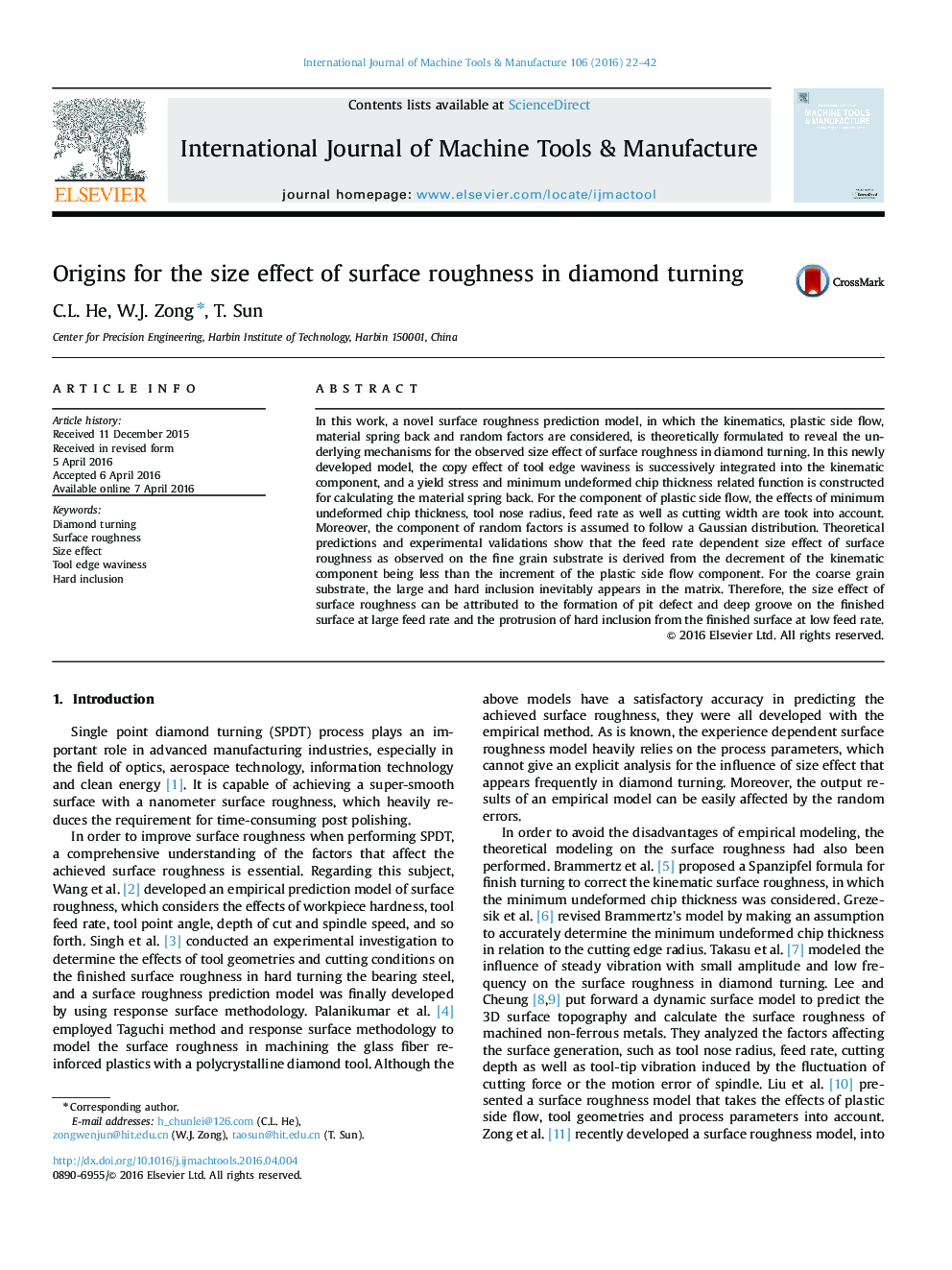| Article ID | Journal | Published Year | Pages | File Type |
|---|---|---|---|---|
| 780439 | International Journal of Machine Tools and Manufacture | 2016 | 21 Pages |
•A new surface model is developed in theory to explain the size effect of surface roughness.•Tool edge waviness is considered in modeling the kinematic roughness.•Plastic side flow is a function of tool nose radius, edge radius, cutting width and feed rate.•On fine grain substrate, the size effect depends on the large increment of plastic side flow.•On coarse grain substrate, the size effect is derived from the hard inclusions.
In this work, a novel surface roughness prediction model, in which the kinematics, plastic side flow, material spring back and random factors are considered, is theoretically formulated to reveal the underlying mechanisms for the observed size effect of surface roughness in diamond turning. In this newly developed model, the copy effect of tool edge waviness is successively integrated into the kinematic component, and a yield stress and minimum undeformed chip thickness related function is constructed for calculating the material spring back. For the component of plastic side flow, the effects of minimum undeformed chip thickness, tool nose radius, feed rate as well as cutting width are took into account. Moreover, the component of random factors is assumed to follow a Gaussian distribution. Theoretical predictions and experimental validations show that the feed rate dependent size effect of surface roughness as observed on the fine grain substrate is derived from the decrement of the kinematic component being less than the increment of the plastic side flow component. For the coarse grain substrate, the large and hard inclusion inevitably appears in the matrix. Therefore, the size effect of surface roughness can be attributed to the formation of pit defect and deep groove on the finished surface at large feed rate and the protrusion of hard inclusion from the finished surface at low feed rate.
Graphical abstractFigure optionsDownload full-size imageDownload as PowerPoint slide
